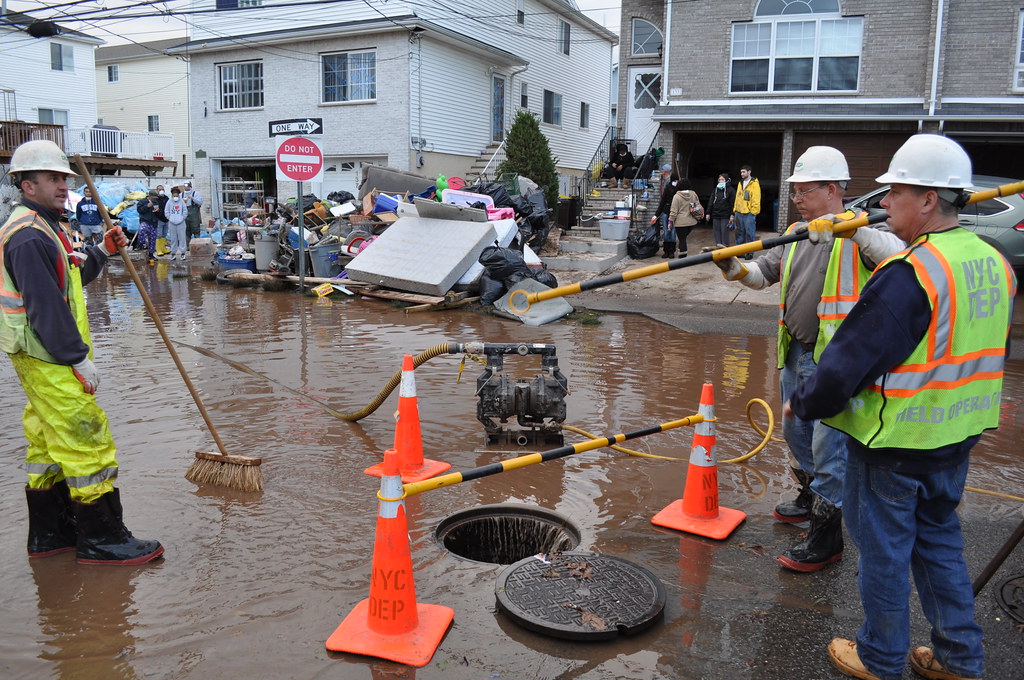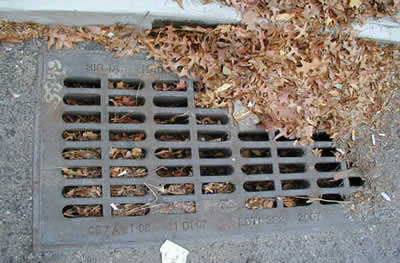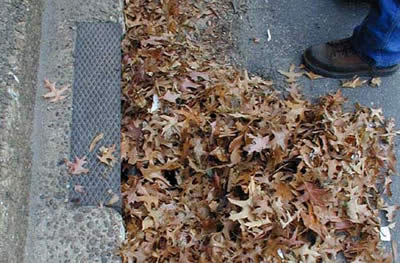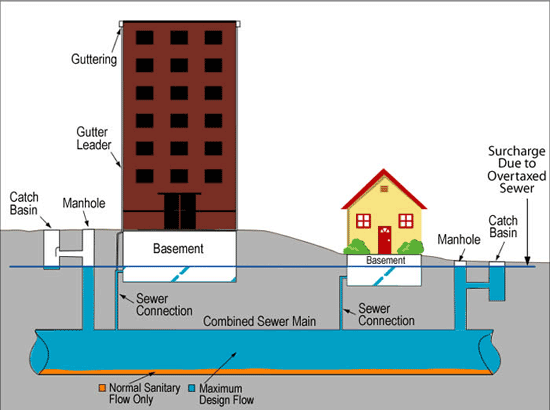Flood Prevention Please Try Again Later Team Speak
Flood Prevention

In recent years, flooding due to heavy rain events has occurred more frequently and severely than in the past, affecting a broader range of communities than ever. Local topography, including lengthy river and ocean coastlines, dense urban development patterns, the capacity of our aging sewer system and increasingly extreme weather are some of the biggest causes.
To learn about what to do during or after a flood, visit NYC Emergency Management.
Causes of Flooding
Extreme Weather and Climate Change
Increased Precipitation
The New York City Panel on Climate Change (NPCC) anticipates that by the end of the century, the city could experience as much as 25 percent more annual rainfall than today, and 1.5 times as many days with more than one inch of rain. The intensity of rainfall is also increasing, with more rain falling in a shorter amount of time. These types of high intensity "cloudburst" rain events—sudden, heavy downpours where a high volume of rainfall occurs in a short amount of time—can exceed the capacity of New York City's Sewer System.
Sea Level Rise and Tidal Impacts
In coastal areas, rising sea levels can exacerbate local flooding conditions, causing tidal water to enter the sewer system and reducing the speed at which water can drain from inland sources. Sea level rise in New York City has averaged 1.2 inches per decade since 1900, nearly twice the observed global rate.
Learn more about our Climate Resiliency programs and intiatives.
Blocked Catch Basin Grates

Partially Clogged Catch Basin

Fully Clogged Catch Basin
Another serious cause of flooding is blocked catch basin grates in our streets. This occurs when rain water—especially during very intense storms—pours over streets and sidewalks, pushing debris like leaves and litter on to the catch basin where it molds itself into a mat. Such debris can block the grate so completely that the rain water cannot enter the storm sewer. Instead, it pools around the basin, causing flooding even before the storm sewer is full.
If you observe a catch basin that is clogged or in need of repair, please call 311 or fill in this online this form so our staff can track, pin point, and address any problem areas.
Surcharged Sewers

Causes of Street Flooding and Sewer Backups
Sewers can also become overtaxed during intense rain events when the sheer volume of stormwater and wastewater entering the system fills them to capacity, leaving no space for excess water to enter. In this condition, described as a sewer being surcharged, the excess stormwater remains above ground. Unless absorbed by green spaces or channeled to a body of water, this flooding can flow off the street into below-grade areas such as driveways, patios and basements.
Day to day, we work to keep our Sewer System up and running efficiently. We clean and maintain our sewer and drainage systems to keep them in a state of good repair. At the same time, we plan and build both traditional infrastructure and implement best management practices for managing stormwater and wastewater.
Sewer Backups
If you have experienced a sewer backup after a heavy rain event or snow melt, call 311 or fill in this online form. For information about how to clean a home after a flood or sewage overflow, visit Sewer Backup or Flood Clean Up.
- Learn more about our Sewer System
- Learn more about our Wastewater Treatment System
- Learn more about Stormwater Management
What You Can Do to Help Prevent Flooding
There's actually a lot New Yorkers can do to protect our City from flooding. For additional tips to prevent your home from flooding, download our Homeowner's Guide to Rain Event Preparedness.
Clean Your Nearest Catch Basin
We do our best to keep catch basins clear of debris—but all New Yorkers can chip in. Pick up your leaves for collection each fall. Check guidelines and dates of the Department of Sanitation's free Leaf Collection Program.
You can also remove litter, leaves or other debris from the grates of a catch basin to help it function at its best. If you would like to learn more about how to get involved in your local community to support your neighborhood's catch basins and green infrastructure, visit Harbor Protectors.
If you see a catch basin that is clogged or damaged, please call 311 or fill in this online form so that we can follow up.
Conserve Water
One way to reduce pressure on overburdened sewers is to use less water in our homes and businesses. The less water we use, the less sanitary flow we create, and the more space there will be for stormwater in our sewers during heavy storms. Reducing the water we use also has the added benefit of curbing greenhouse gas emissions. The less water we let go down the drain or flush down the toilet (we call it "wastewater"), the less energy it takes for the City's 14 wastewater treatment plants to process and treat it.
- Learn a few Water Saving Tips
- Learn more about our citywide Conservation Programs
Treat our Sewer System with Care
Invest in Green Infrastructure
Source: https://www1.nyc.gov/site/dep/environment/flood-prevention.page
0 Response to "Flood Prevention Please Try Again Later Team Speak"
Post a Comment